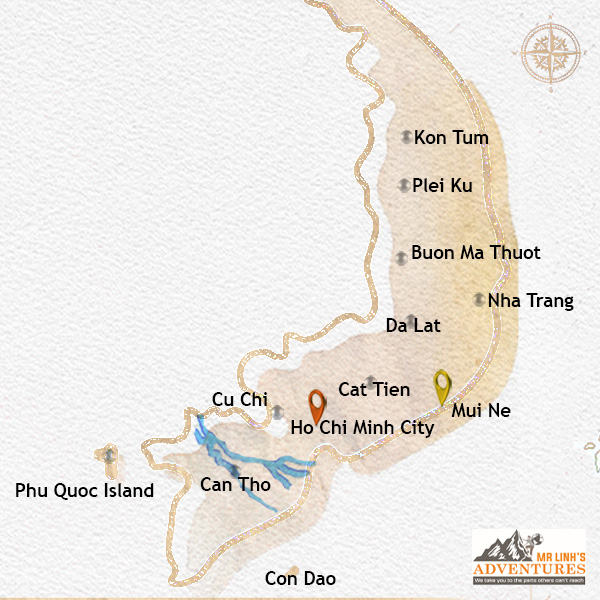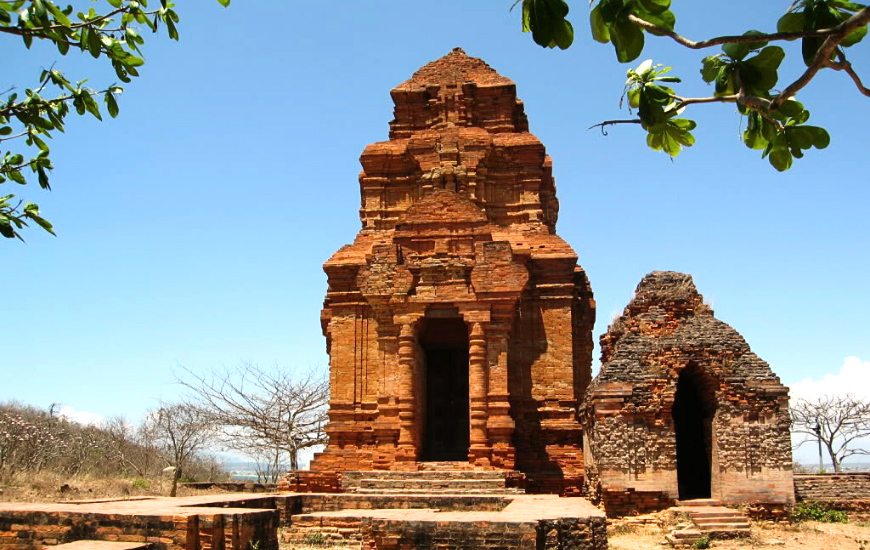 Overview
Overview

Once a peaceful fishing village,
Mui Ne has undergone a dramatic transformation to become a popular seaside resort. Its tourist boom began with the advent of kitesurfing, with exceptional wind conditions attracting enthusiasts from all over the world and propelling Mui Ne to the ranks of the best spots in Asia. This popularity has led to rapid development, fortunately controlled, preserving the harmony of the places with low-rise constructions. A second wave of tourists, Russians, marked the history of Mui Ne, leaving visible traces in the menus and signs translated into Russian, even if their presence has since reduced.
Mui Ne, a jewel of the southern coast of Vietnam, is much more than a simple seaside resort. It is a destination that awakens the senses, where the golden sand dunes meet the azure waves of the South China Sea. Renowned for its unique landscapes and water activities, Mui Ne attracts travelers in search of adventure, discovery and sharing. Easily accessible by motorbike, train or car from Ho Chi Minh City, Mui Ne is a popular getaway to escape the urban bustle.
 Heritage
Heritage
Beyond the Beaches, The Farming Spirit of Mui Ne - Mr Linh's Adventures
Mui Ne has developed around tourism, but it is still possible to discover the traditional life of the
fishing villages by moving away from the main area. These neighboring villages offer an
immersion in the local culture and the opportunity to meet the inhabitants. The colorful boats and fishermen's baskets, swaying on the waves, create a picturesque scene. And of course, these villages are the ideal place to enjoy freshly caught seafood.

Po Shanu Towers, relics from the Champa Civilization
Mui Ne is also home to vestiges of a rich history. The Cham civilization, present in Vietnam between the 2nd and 15th centuries, left behind the Po Shanu towers, witnesses of this ancient culture. Although less imposing than the ruins of My Son, these towers, partly restored, testify to the past grandeur. Two main towers and some annex buildings, dedicated to the cult of the Hindu god Shiva, offer an insight into the architecture and creativity of this civilization. Their location on a hill offers a panoramic view of the surroundings, adding to the magic of the place.
In Mui Ne, the Linh Long pagoda, is an important Buddhist place of worship, located about 22 kilometers from Phan Thiet. Founded in 1811, this temple was first a modest bamboo structure before being rebuilt in stone and tiles in 1851, marking an important stage of its architectural development. The temple presents a harmonious blend of traditional Vietnamese and Buddhist architectural styles. The entrance is marked by a beautifully decorated gate, adorned with bright colors and complex sculptures inspired by ancient legends. Inside, the main hall houses lacquered columns, colorful frescoes illustrating scenes from Buddhist scriptures, as well as statues of deities in clay and wood.
Mui Ne is also home to the Van Thuy Tu temple, dedicated to the cult of whales.